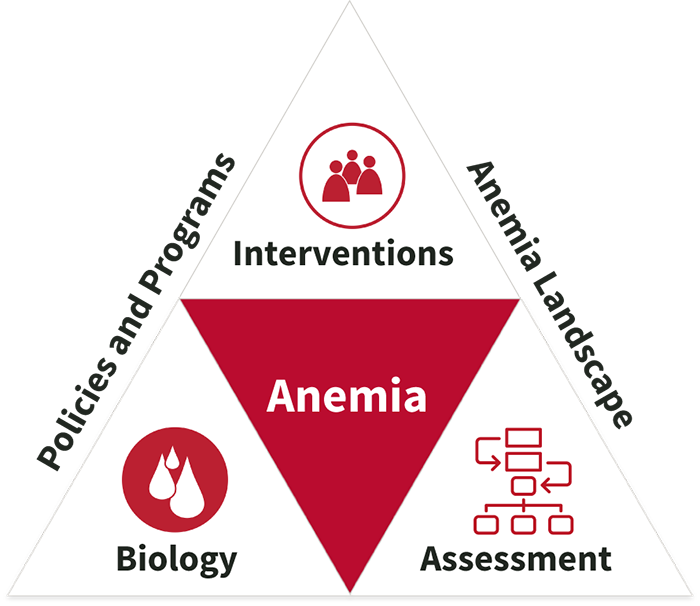Anemia remains a critical global public health concern and practical approaches to assessing anemia and its key determinants are required in both clinical and public health settings. To achieve global goals for anemia reduction, greater reliability, precision, and consistency of anemia assessment approaches are needed. Standardized approaches to assess anemia and its causes are essential to reliably assess progress on global goals for anemia reduction. The “Anemia Assessment” section provides a brief review of how to assess anemia based on hemoglobin concentrations cutoffs that correspond to age, sex, and physiologic status. The “Causes of Anemia” section discussed how to assess the likely causes of anemia in different settings.
The causes of anemia are broadly classified as non-nutritional (e.g., due to infection, inflammation, blood loss, or genetic disorders) or nutrition-specific (e.g., due to deficiencies in iron, vitamin A, riboflavin, vitamin B12, or folate). The section on “Using Survey Data for Program Decision Making” introduces a framework for assessing anemia in populations based on the “ecology of anemia”, which recognizes its many overlapping causes. We present a decision tree to inform the anemia-related data that researchers may need to collect in population-based surveys and a supporting table with information on how to collect them. We also describe an approach to interpret anemia risk factor data from population-based surveys that can inform decisions about context-specific interventions.
The USAID Advancing Nutrition Anemia Task force has developed five Anemia Briefs that explore current evidence and practice to understand and address the causes and consequences of anemia, and interventions to reduce the burden of disease. One of those briefs—"Anemia Assessment in Clinical and Public Health Settings”—explore issues related to the assessment of anemia.
We found 99 resource(s)
Pagination
- First page
- Previous page
- …
- 5
- 6
- 7
- 8
- 9
- 10
- 11
- 12
- 13



